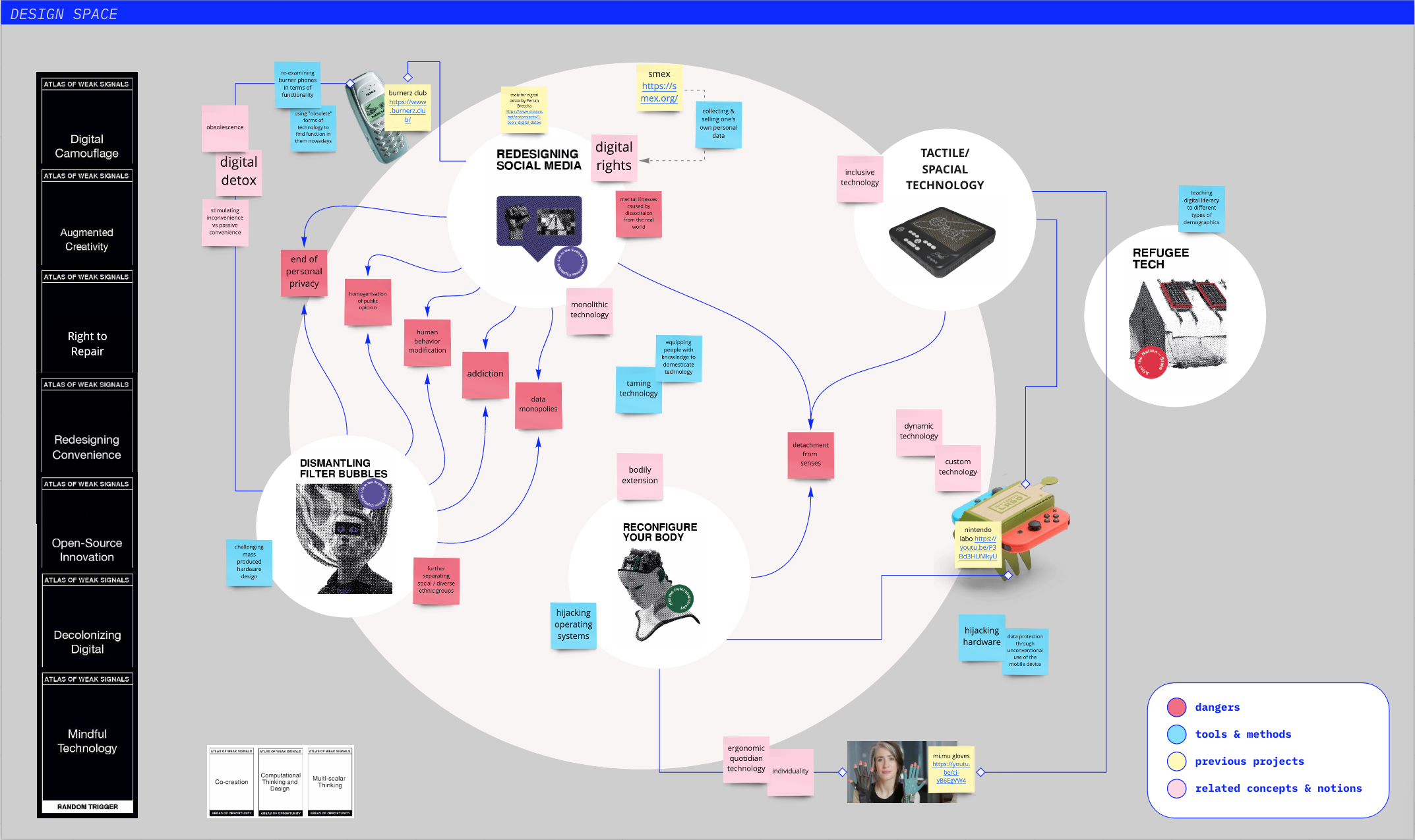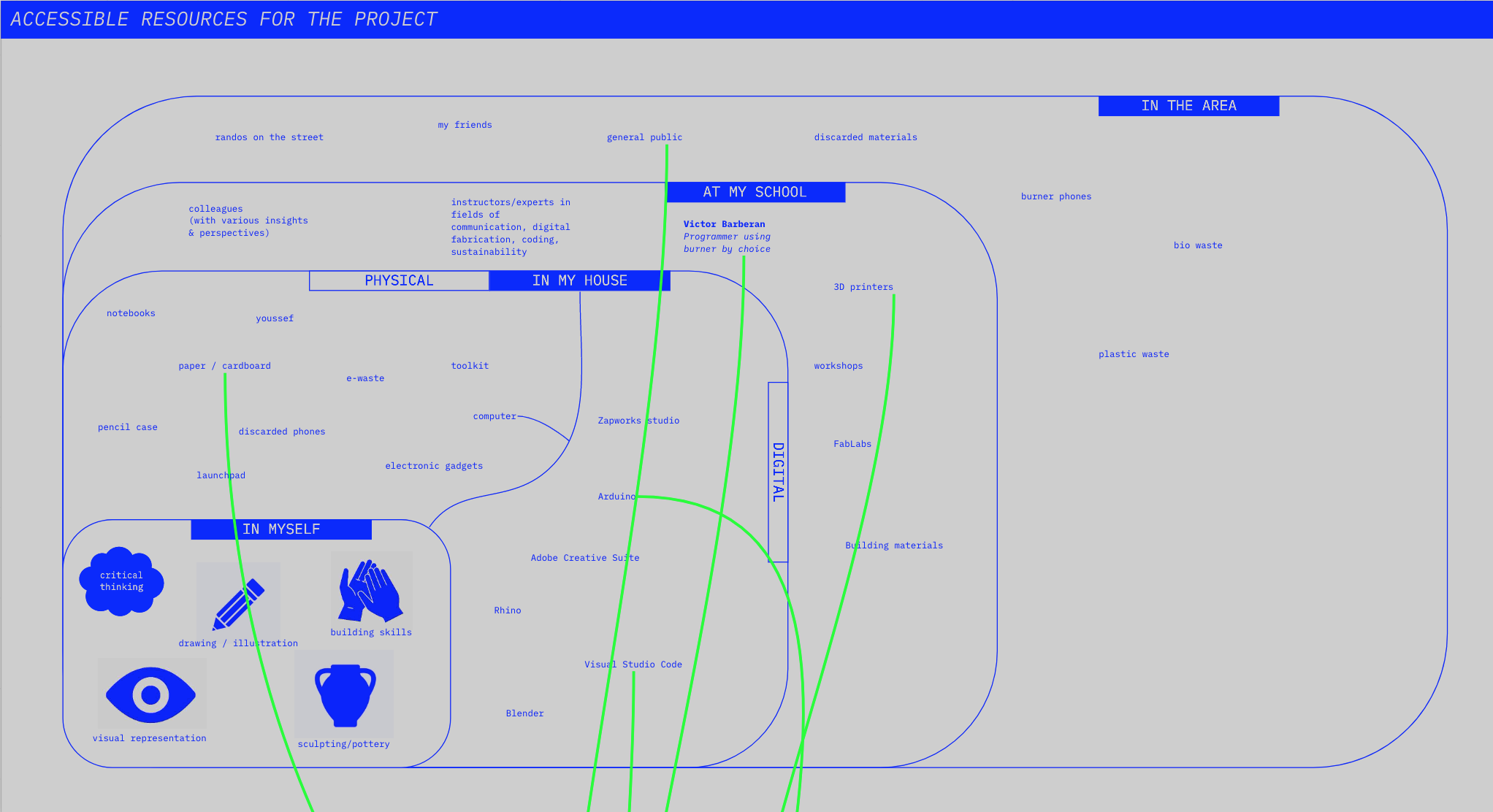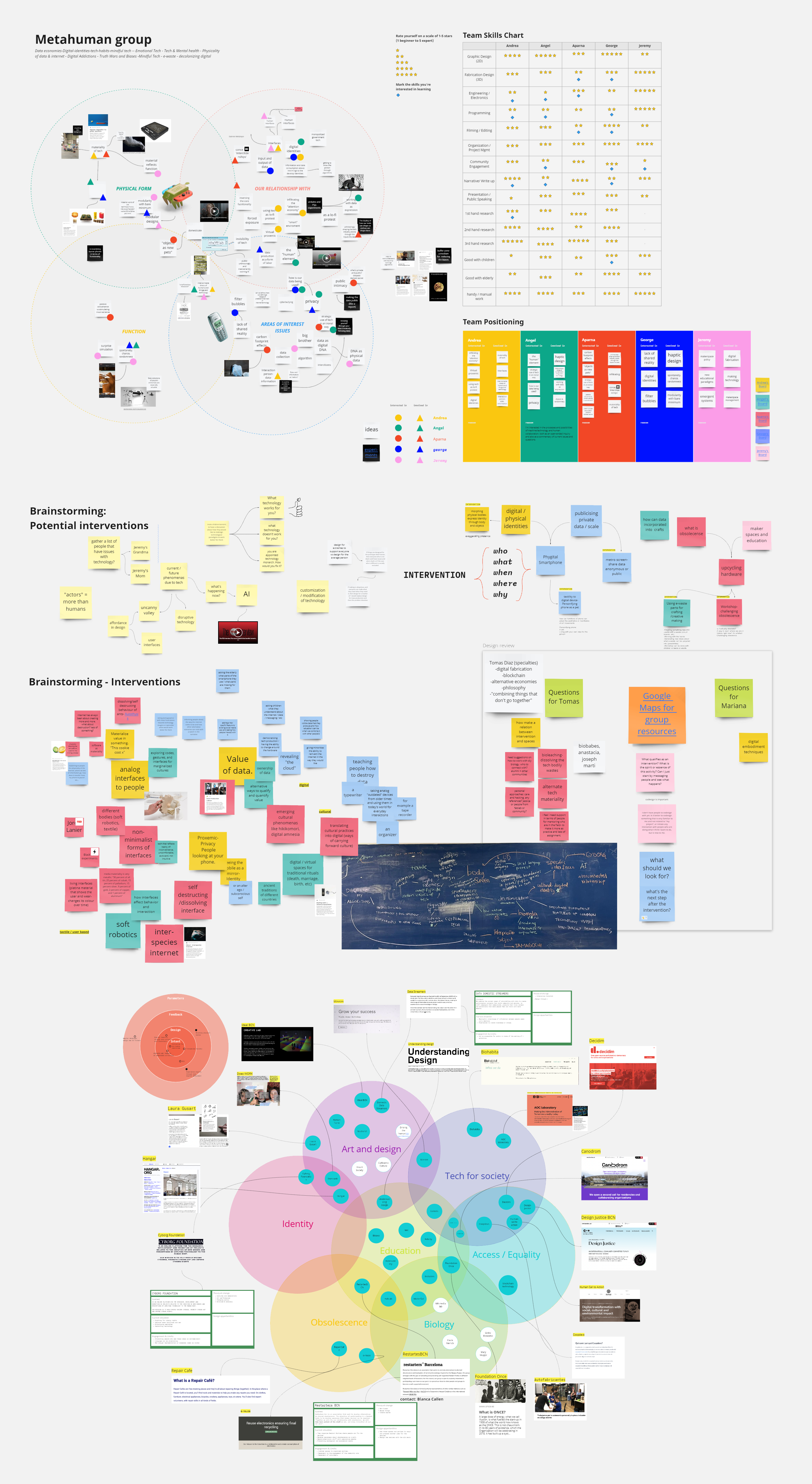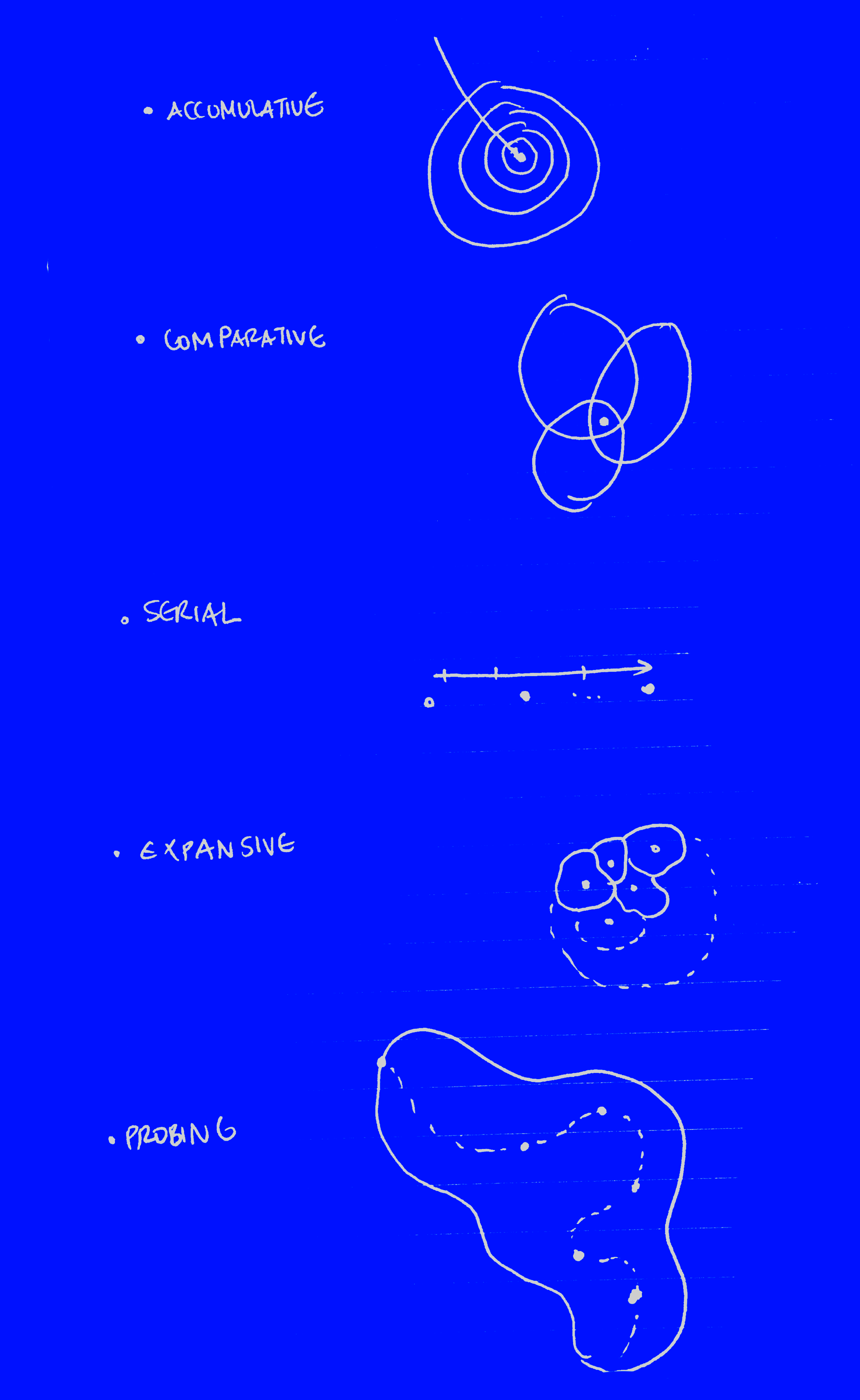
design studio I
phase 1 design research + first person perspective
As a way to initiate our design researches and future interventions, we were introduced to some design research methods and ways of thinkings. These would serve as tools that help us better navigate our subjects and topics.
Among these methods we learned 5 different ways of approaching the subject in design research (fig. 1), some linear (like the serial approach), others were more complex.
Aside that, we went over the importance of prototyping as a design tool, and went over the 4 different roles of prototyping:
- role 1: as an experimental component (for aesthetic or practical reasons to test a design)
- role 2: as a means of inquiry (to measure social phenomena for example)
- role 3: as a research archetype (physical embodiments of concepts)
- role 4: more process driven, figuring out how to build an artifact (physical embodiments of concepts).
Finally, we went over the different perspectives we can adopt during our design research, and their respective outcomes. We focused specifically on the first-person perspective (1pp) as the most involving way to inquire for our design intervention, placing ourselves and our subjective experience in the middle of the process, designing firstly for ourself, from our point of view and expanding from that.
phase 2 mapping design space + design toolbox
As part of our Atlas of Weak Signals with Mariana, we were asked to think of our design space (fig. 2). What components define it? What directions could it potentially take? What are some important references and precedents? How do some elements intersect with others? What interesting synergies might it produce?
The design space should serve as an expanding mind map which would document, in a schematic fashion, the way our ideas and progressing alongside our courses in MDEF.
Initially, and as usual, I had a hard time choosing my trigger cards, as I was almost interested in everything that was presented. I tried to go for some areas that I hadn’t worked in previously, places that peaked my curiosity. I managed to choose 4 main trigger cards from the ones that were preset by Mariana, and create one myself. From these 5 main elements, I built my design space, linked things together, references previous projects and research and color coded my notes.

fig. 2 Initial design space
Aside the design space, we were asked to map out the resources at our disposal as our “design toolbox” (fig. 3), from tangible, intangible, to human resources that could serve a purpose and help with our design research and interventions.

fig. 3 Working design toolbox
phase 3 collaborations, group formations, “The Metahumans Club”
With our design spaces and toolboxes ready, we set out to collaborate and find colleagues with mutual interests. The purpose of the group formation was to organize and plan our collective intervention together. Mariana went through our individual design spaces and grouped us based on the common themes that were prominent. I was in the Metahumans Club, along with Aparna, Andrea, Angel, Jeremy and later on Fiorella.
We were all interested in tech, different areas of it, but mainly intrigued in interfaces, data collection, obsolescence and the physicality of technology. We were supposed to brainstorm and create a collective design space (fig. 4) that features areas where we could potentially collaborate.

fig. 4 Collective design space
This team generated some very interesting and robust brainstorming sessions where we would go on for hours discussing specific concepts. The conversations were heavy with theory. A downfall in this collaboration was the inability to translate these thoughts into possible design interventions, as the themes that brought us together were intangible, critical and abstract.
phase 4 Collective interventions + design dialogues
After several attempts at finding a collective intervention, we finally hit a mark that made sense for all of us. Our collective design intervention would be an MDEF workshop tackling identity and interactivity with technological devices that frustrate.
The workshop consisted of 3 main parts: the first was a survey, where participants would first answer some personal questions about some individual characteristics, then go over some questions about their chosen device that frustrates them. The second part of the workshop was speculating and prototyping, with some available materials, an alternative design for the device that would make it less frustrating and more in tune with the individual person. Finally, the 3rd part of the workshop is interacting with the prototype, using it, showing how it would attach to the human body and how it would function.
This intervention was pretty interesting and opened some doors and provided some insight into what could be an interesting project to develop in the next terms. The results were interesting as some people really went out for something that is beyond the laws of physics and very speculative, while others really turned their intervention into a repair party and kind of screwed open their device and tried to “fix” it based on how they wish to see it.
Finally, some reflections that occurred during this collective effort guided me into thinking about the act of decolonizing technology and what it means. For instance, in the Arab world, technology can be a bit frustrating as some softwares are not designed in Arabic at all, which makes some demographics forced to use foreign languages (like English, French or Spanish) in order to be able to have access to their technical resources, which further reinforces the idea of colonialization. Which is why I would like to invest my energy forward in imagining what would native Arabic technology look like, if it was designed for the Arab individual.
